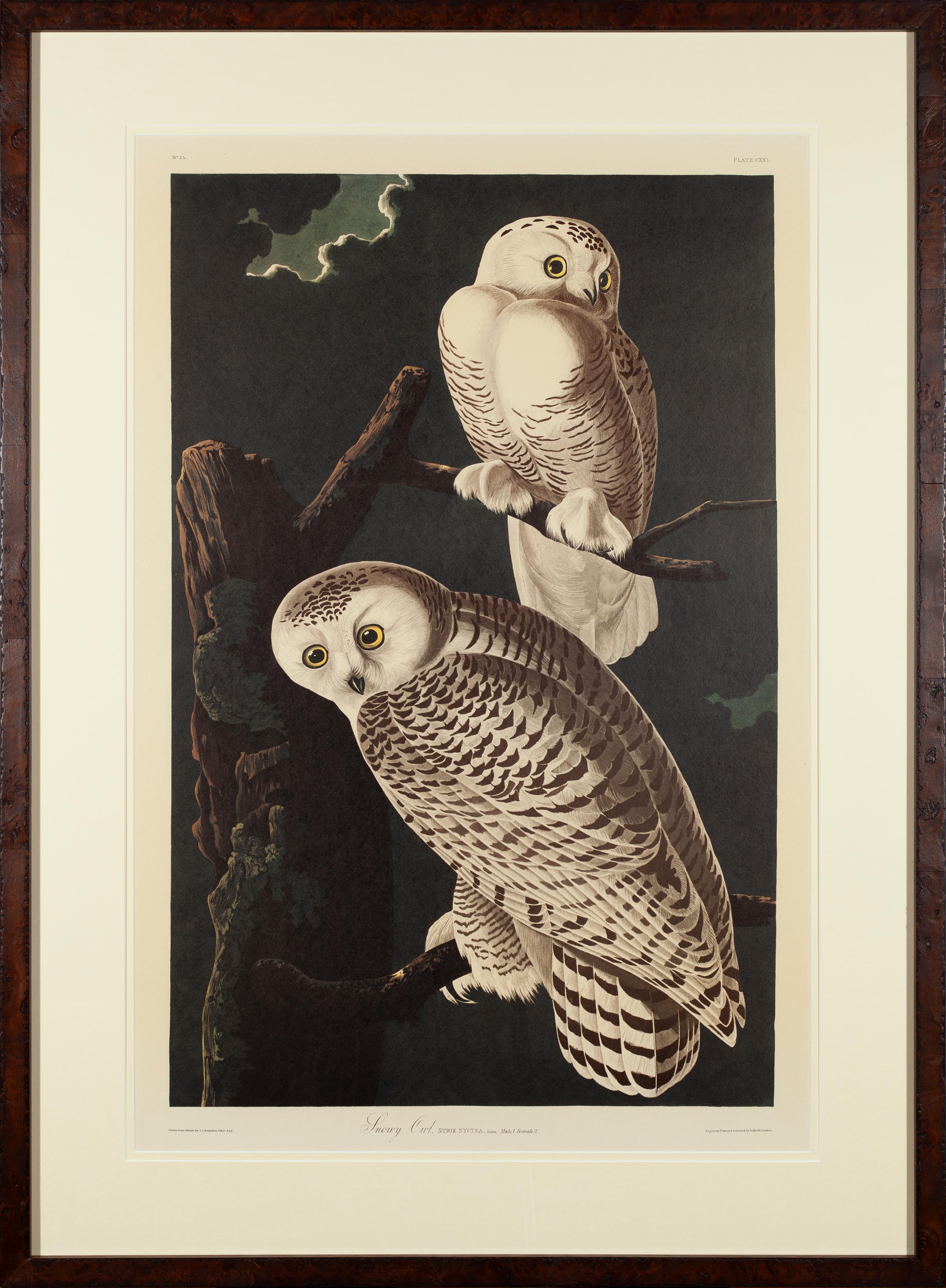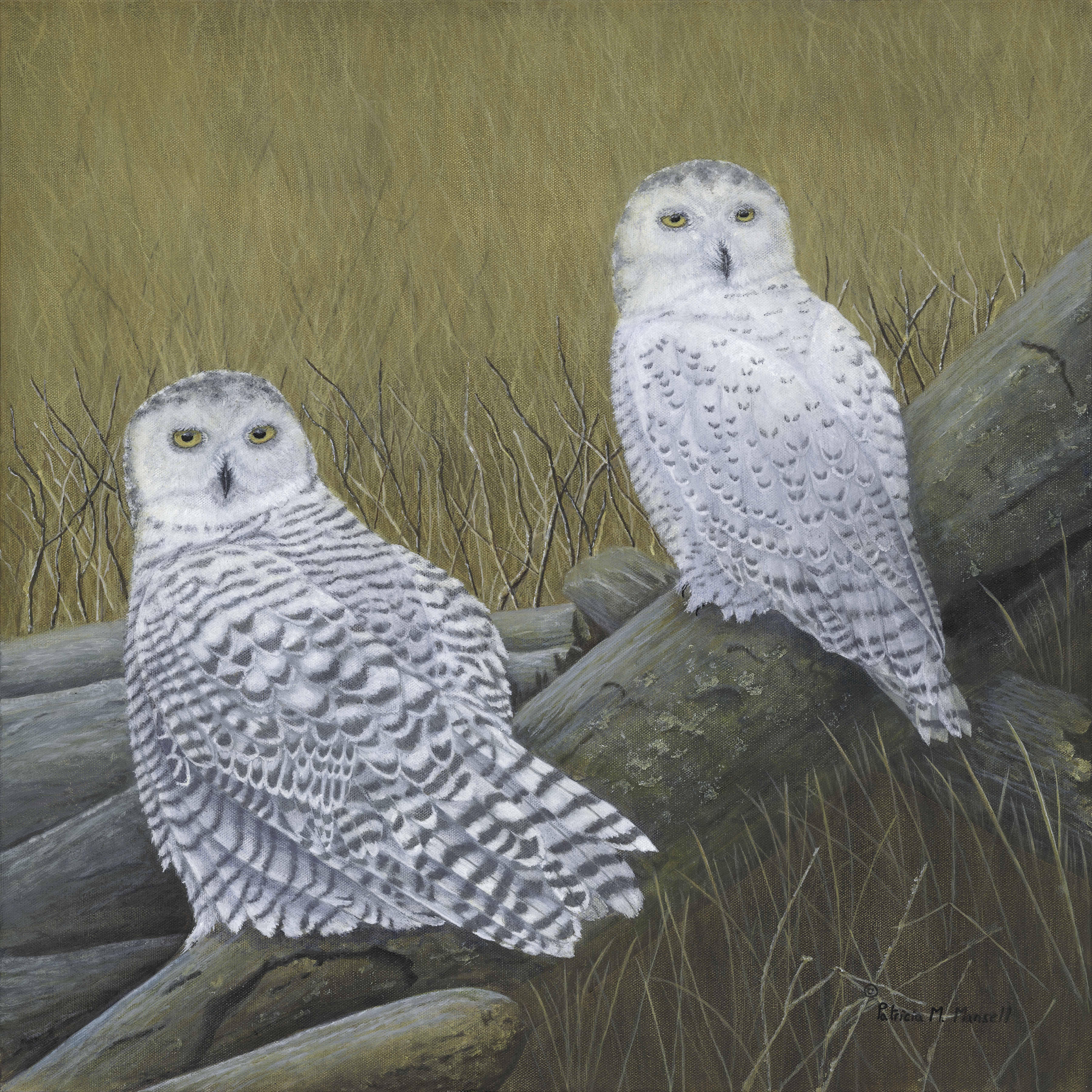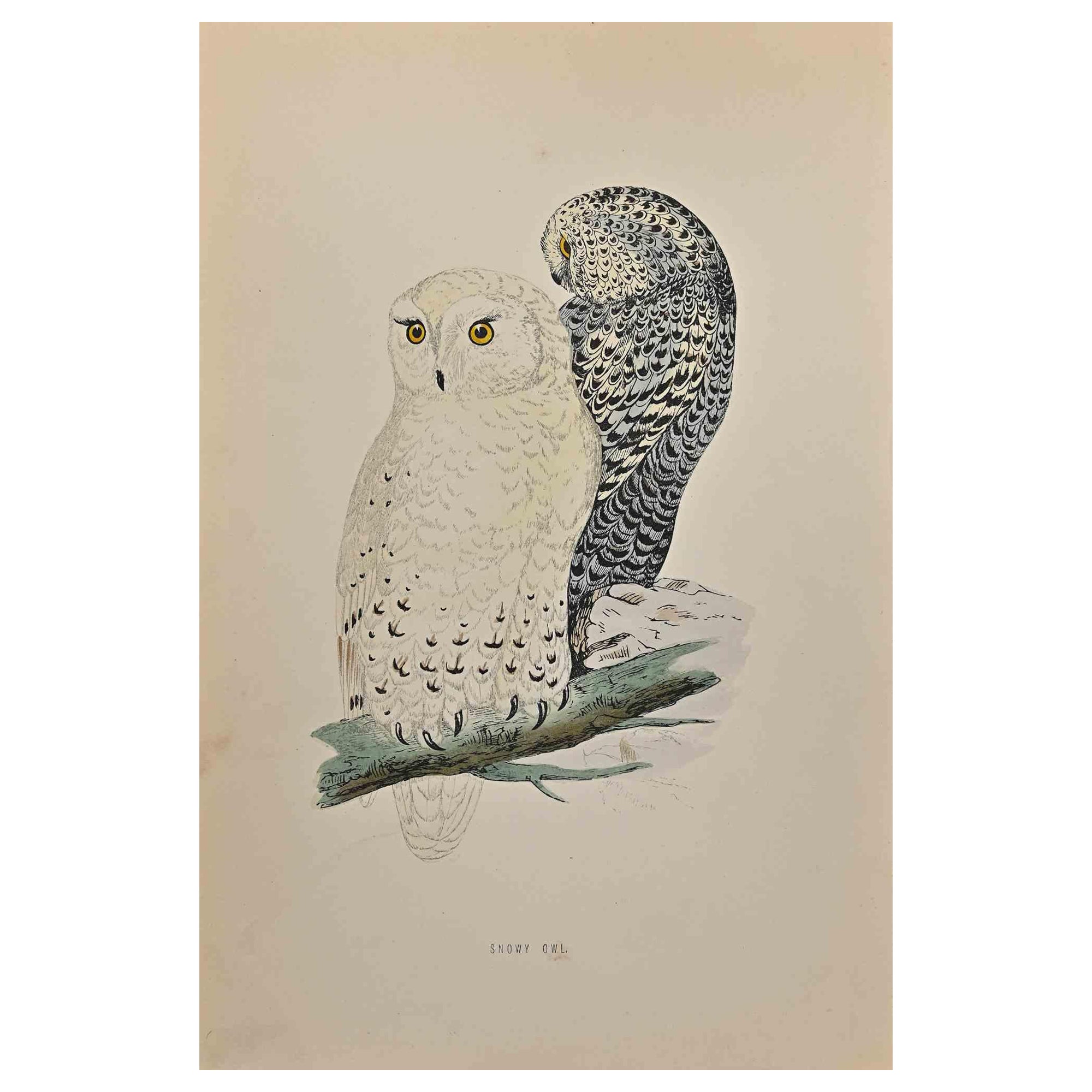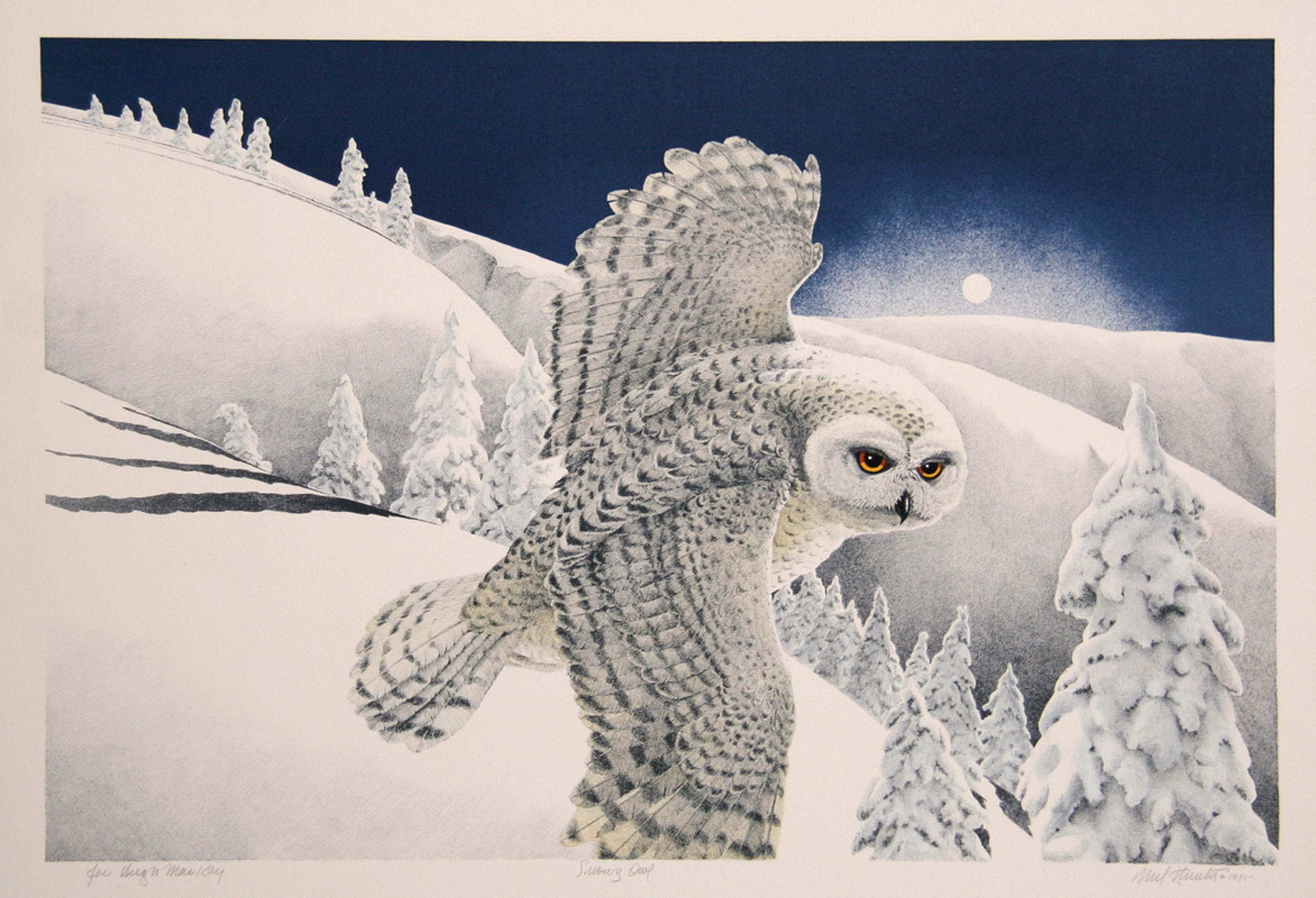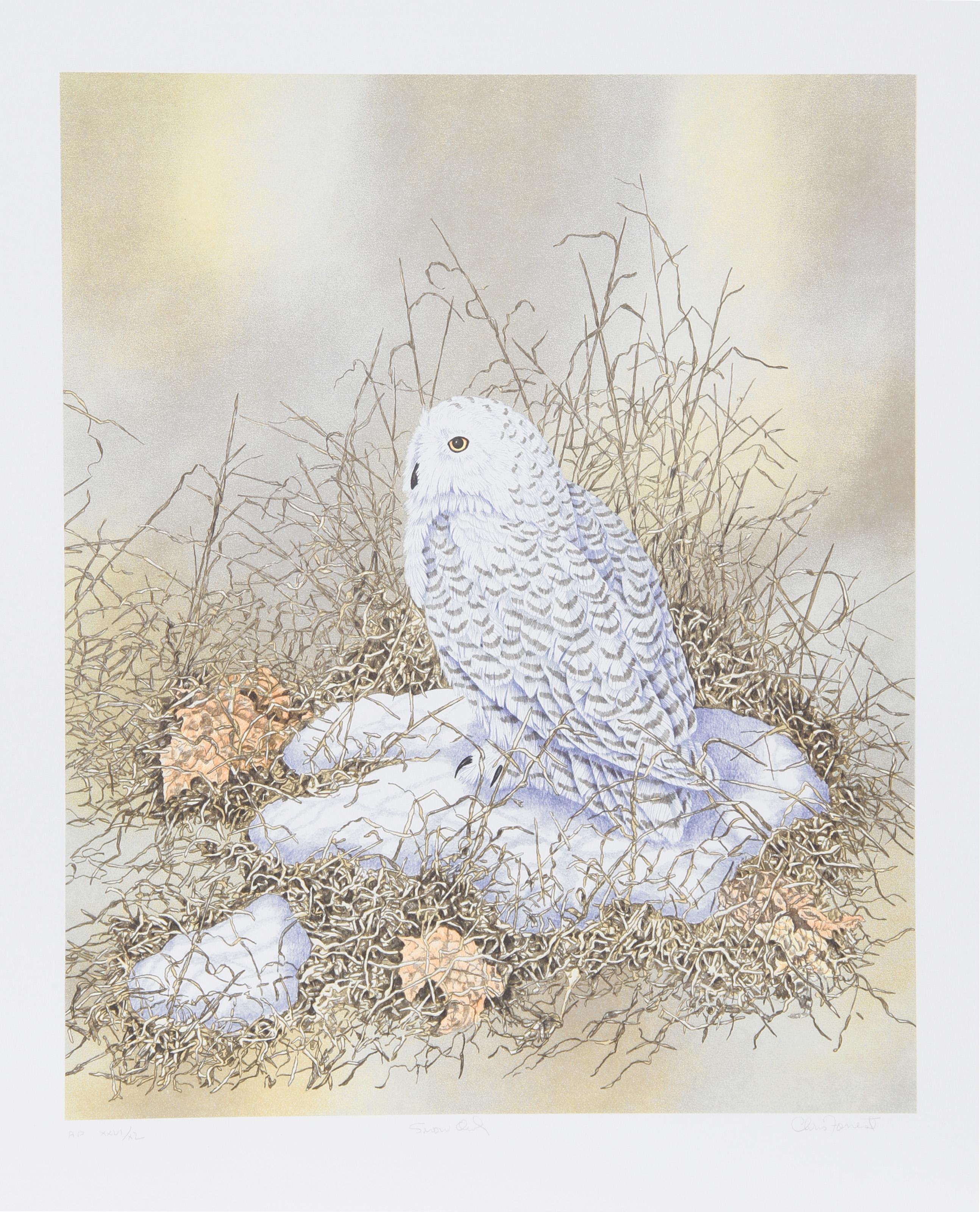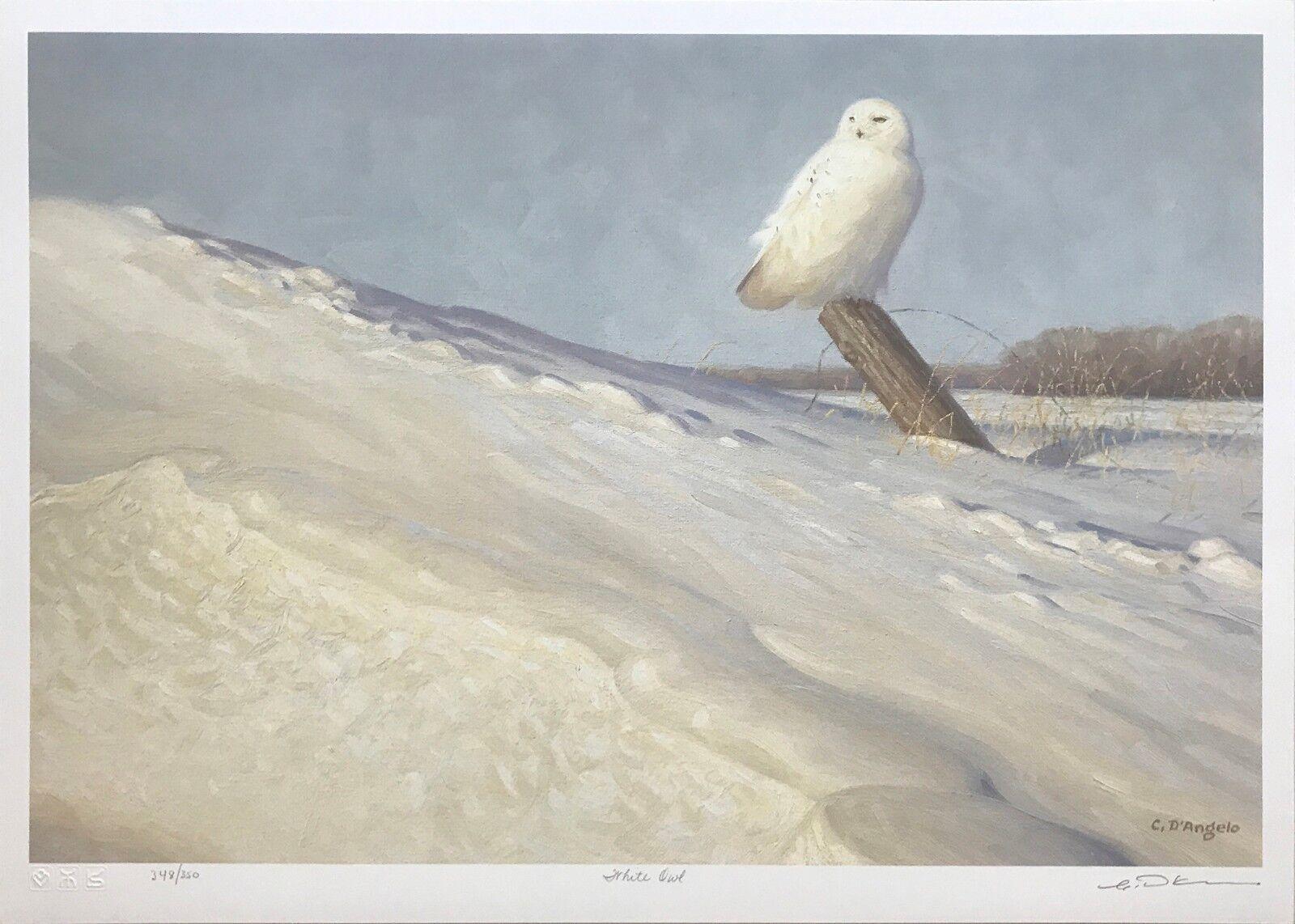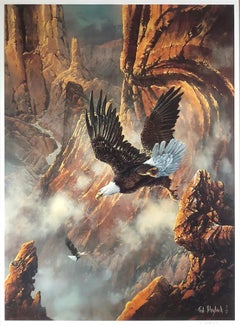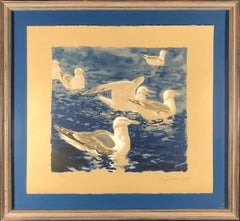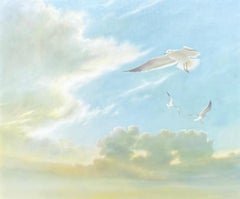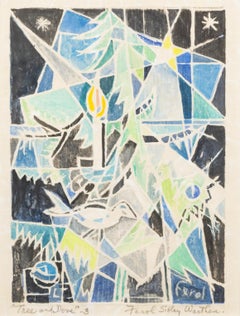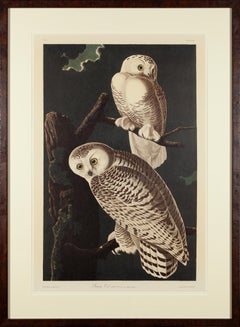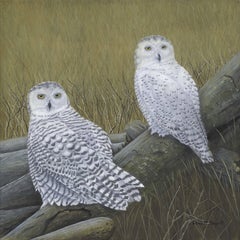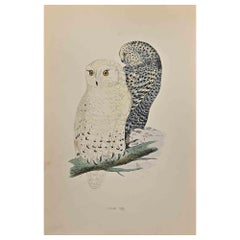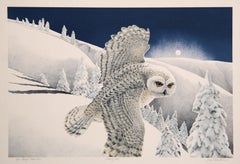Items Similar to Two Snowy Owls
Want more images or videos?
Request additional images or videos from the seller
1 of 5
Roger Tory PetersonTwo Snowy Owls
Price Upon Request
Price Upon Request
Price Upon Request
Price Upon Request
Price Upon Request
Price Upon Request
Price Upon Request
Price Upon Request
Price Upon Request
Price Upon Request
About the Item
Color Lithograph
Image Size: 30 x 19 inches
Framed Size: 40.25 x 29.75 inches
Edition 392/950
Artist Signed and Numbered
Artist and naturalist Roger Tory Peterson, initially famous for his 1934 field guide to the study of birds, was born of Swedish immigrant, working-class parents in 1908 in rural Jamestown, in upstate New York. As a boy, apparently imbued with a passion present from birth, he observed and sketched the abundant birds of wood and field. He also read about Audubon, Lear, Durer and Fuertes, artists who painted nature. His interest in birds was also guided by his seventh grade teacher, Blanche Hornbeck, who had started a Junior Audubon Club. Peterson has said, " I can't remember a time when I didn't watch birds"
Peterson later studied commercial art at the Art Students League and National Academy of Design in New York City. As a young man, after his schooling, he taught art and science in Massachusetts, where he created his unique system for identifying birds in the field. He later developed and published more than fifty other guides on subjects as diverse as mushrooms, clouds, fish, stars and insects.
One of the world's preeminent naturalists, Peterson's identification system for birds in their natural habitat was called the greatest invention since binoculars. He commented on the book, its methods and origins in 1980: "In 1934 there was nothing remotely like the Field Guide in print. Still, I can't take credit for inventing something out of whole cloth. My special contribution was the visual element within a carefully chosen context. Other ornithologists, both noted and nameless, had worked out the field marks of most birds. I combined their knowledge with my visual presentation and, at the urging of two friends in particular, carried the idea through. Their encouragement, my native interest in birds, and my professional training as an artist enabled me to create something that appeared new, though it was really a kind of fertile hybrid."
Peterson credits Ernest Thompson Seton's semi-autobiographical story, "Two Little Savages," with awakening him to the individuality in the markings of birds. Peterson says, "I don't remember when I first read that tale. As a boy I found my most faithful friends in books Somewhat solitary, I was fascinated by birds and that set me distinctly apart. In Jamestown, New York, and throughout the nation, bird watchers were rare. They were considered kooks, though we didn't have that word then (I was called a number of other things, names I'd rather leave unspoken)."
Peterson was twice nominated for a Nobel Prize, receiving every major award for ornithology, natural science, and conservation. He was awarded twenty-two honorary degrees, as well as numerous medals and citations, including the Presidential Medal of Freedom.
Peterson was also a worldwide filmmaker, making films in Europe, Africa, the Arctic, Galapagos Islands, Antarctica as well as at home in America. For more than thirty years, Peterson was art director for the National Wildlife Federation. He was a member of the board of directors of Defenders of Wildlife from 1965 to 1973. Peterson was also art editor of the National Audubon Society's magazine, as well as in charge of their educational programs.
Peterson's paintings are in the collections of the Metropolitan Museum of Art, New York City; Minneapolis Institute of Art; and the Leigh Yawkey Woodson Art Museum. They were exhibited at the Smithsonian Institution, Washington, D.C. and California Academy of Sciences.
Roger Tory Peterson died on July 28, 1996 at his home in Old Lyme, Connecticut. He was 87.
- Creator:Roger Tory Peterson (1908 - 1996, American)
- Dimensions:Height: 40.25 in (102.24 cm)Width: 29.75 in (75.57 cm)
- Medium:
- Movement & Style:
- Period:
- Condition:The lithograph is in excellent condition. The frame does have some scuff/scrapes to the left side. Please email or call if you would like to see more detailed images.
- Gallery Location:Missouri, MO
- Reference Number:1stDibs: LU74732249743
About the Seller
5.0
Vetted Professional Seller
Every seller passes strict standards for authenticity and reliability
Established in 1970
1stDibs seller since 2017
156 sales on 1stDibs
Typical response time: Several days
- ShippingRetrieving quote...Shipping from: Missouri, MO
- Return Policy
More From This Seller
View AllAmerican Eagle (Nest Builder III)
By Ted Blaylock
Located in Missouri, MO
Ted Blaylock (b. 1946)
"Nest Builder III" 1986
Print
Ed. 586/950
Signed and Numbered
Ted Blaylock opened his own art studio and gallery in Collinsville, IL in 1969. He eventually mo...
Category
1980s American Realist Animal Prints
Materials
Paper, Lithograph
Price Upon Request
Herring Gulls
By Jamie Wyeth
Located in Missouri, MO
Jamie Wyeth
"Herring Gulls" 1978
Color Lithograph
Signed Lower Right
Numbered Lower Left 149/300
Born in 1946, James Browning Wyeth came of age when the meaning of patriotism was clouded by the traumas of the Vietnam War and the scandals of Watergate. Working in an era of turmoil and questioning of governmental authority, he did art that encompassed both marching off to war and marching in protest.
One of James's early masterworks, Draft Age (1965) depicts a childhood friend as a defiant Vietnam-era teenager resplendent in dark sunglasses and black leather jacket in a suitably insouciant pose.
Two years later Wyeth painstakingly composed a haunting, posthumous Portrait of President John F. Kennedy (1967) that seems to catch the martyred Chief Executive in a moment of agonized indecision. As Wyeth Center curator Lauren Raye Smith points out, Wyeth "did not deify the slain president, [but] on the contrary made him seem almost too human."
Based on hours of study and sketching of JFK's brothers Robert and Edward -
documented by insightful studies in the exhibition - the final, pensive portrait seemed too realistic to family members and friends. "His brother Robert," writes Smith in the exhibition catalogue, "reportedly felt uneasy about this depiction, and said it reminded him of the President during the Bay of Pigs invasion."
In spite of these misgivings, James's JFK likeness has been reproduced frequently and is one of the highlights of this show. The poignancy, appeal and perceptiveness of this portrait, painted when the youngest Wyeth was 21 years old, makes one wish he would do more portraits of important public figures.
James himself feels he is at his best painting people he knows well, as exemplified by his vibrant Portrait of Jean Kennedy Smith (1972), which captures the vitality of the slain President's handsome sister.
He did paint a portrait of Jimmy Carter for the January 1977 man-of-the-year cover of Time magazine, showing the casually dressed President-elect as a straightforward character posed under a flag-draped water tower next to the family peanut plant in Plains, Ga. James recalls that Carter had one Secret Service agent guarding him as he posed outdoors, a far cry from the protection our Chief Executives require today.
As a participating artist in the "Eyewitness to Space" program organized by the National Aeronautics and Space Administration in collaboration with the National Gallery of Art in the late 1960s, Wyeth deftly recorded in a series of watercolors his eyewitness observations of dramatic spacecraft launchings and more mundane scenes associated with the space program.
Commissioned by Harper's Magazine to cover the 1974 congressional hearings and trials of Watergate figures, James Wyeth executed a series of perceptive and now evocative sketches that recall those dark chapters in our history. Memorable images include a scowling John Ehrlichman, a hollow-eyed Bob Haldeman, an owlish Charles Colson, a focused Congressman Peter Rodino, a grim visaged Father/ Congressman Robert Drinan, and vignettes of the press and various courtroom activities. An 11-by-14-inch pencil sketch of the unflappable Judge John Sirica is especially well done. These "images are powerful as historical records," observes Smith, "and as lyrically journalistic impressions of events that changed the nation forever."
Wyeth's sketch of early-morning crowds lined up outside the Supreme Court
building hoping to hear the Watergate case, with the ubiquitous TV cameramen looking on, is reminiscent of recent scenes as the high court grappled with the Bush-Gore contest.
The Wyeth family penchant for whimsy and enigmatic images is evident in Islanders (1990), showing two of James's friends, wearing goofy hats, sitting on the porch of a small Monhegan Island (Me.) cottage draped with a large American flag. Mixing the serious symbolism of Old Glory with the irreverent appearance of the two men, James has created a puzzling but interesting composition.
Painting White House...
Category
1970s American Modern Animal Prints
Materials
Lithograph, Paper
Price Upon Request
Seagulls (Birds in Flight)
Located in Missouri, MO
Seagulls (Birds in Flight), 1982
By. Jim Palmer (American, b. 1941)
Signed and Dated Lower Right
Unframed: 32" x 36"
Framed: 37" x 42.5"
Born in 1941 in Columbia, South Carolina, Jim Palmer attended the University of South Carolina in 1960 before going on to study at the Atlanta School of Art in 1964. In 1966 he and his wife moved to Hilton Head Island, the second artist to do so during the Island's early years. Since living here, he designed the cover of the Chamber of Commerce' Islander Magazine, has been a contributing artist to the Island Events Magazine, and has painted many Low Country scenes that grace homes and businesses throughout the country.
Palmer was the illustrator for two books written by local authors: A Corner of South Carolina and Moonshadows. His work has been included in exhibits at the Hunter Museum in Chattanooga, TN; Mint Museum, Charlotte, NC; Southeastern Artists Exhibition, Atlanta, GA; Greenville County Art Museum, Greenville, SC; Callaway Gardens, Pine Mountain, GA; and Bay Hills Club, Orlando, FL.
His paintings are part of the private collections of C&S National Banks in Columbia and Hilton Head Island; Banker's Trust Tower, Columbia, SC; Palmetto State Bank, Bluffton, SC, among others. Several paintings are also included in the collections of former Presidents Jimmy Carter and Dwight Eisenhower, former South Carolina Governor Robert McNair and singer John Denver.
Category
1980s American Modern Animal Paintings
Materials
Canvas, Oil
Price Upon Request
Tree and Dove
Located in Missouri, MO
Tree and Dove
Ferol K. Sibley Warthen (American, 1890-1986)
Color Woodblock Print
Edition of 3
6.25 x 4.75 inches
13 x 11.5 inches with frame
Signed Lower Right
Titled Lower Left
Born 1890, Died 1986...
Category
Mid-20th Century American Modern Animal Prints
Materials
Color
Flamingos
By William R. Leigh
Located in Missouri, MO
Flamingos
By William Robinson Leigh (1866-1955)
Signed Lower Left
Unframed: 12" x 10"
Framed: 21" x 17.5"
Born near Falling Waters, West Virginia on a plantation a year after the Civil War, and raised in Baltimore, William Leigh became one of the foremost painters of the American West with a career of seventy-five years. Some people referred to him as the "Sagebrush Rembrandt".
He was the son of impoverished Southern aristocrats and took his first art training at age 14 from Hugh Newell (1830-1915) at the Maryland Institute where he was regarded as one of the best students in his class. From 1883 to 1895, he studied in Europe, mainly at the Royal Academy in Munich with Ludwig Loefftz. From 1891 to 1896, he painted six cycloramas or murals in the round, a giant German panorama.
In 1896, he began working as a magazine illustrator in New York City for Scribner's and Collier's Weekly Magazine, and he also painted portraits, landscapes, and genre scenes. However, he was not a very successful artist in those years in New York.
Trips to the Southwest began in 1906 when he made an agreement with William Simpson, Santa Fe Railway advertising manager, to paint the Grand Canyon in exchange for free transportation West. In 1907, he completed his Grand Canyon painting...
Category
20th Century Naturalistic Animal Drawings and Watercolors
Materials
Ink, Pen
Price Upon Request
Alongside
By Tod Lindenmuth
Located in Missouri, MO
Alongside, 1941
Tod Lindenmuth (American, 1885-1976)
Color Woodblock Print
9 x 7 inches
19.75 x 14.5 inches with frame
Signed Lower Right
Titled and Dated Lower Left
A founder of the Provincetown Art Association and one of the original Provincetown Printers, Tod Lindenmuth was a semi-abstract painter and graphic artist who did much to promote modernist styles. Although he was much influenced by Abstract Expressionism, his subject matter was realistic enough to be recognizable. He did linoleum cuts and was one of the first to work with that medium, and towards the end of his life, he experimented with collage. In the 1930s, he had commissions for the Public Works of Art Project and the Works Progress Administration.
Lindenmuth was born in Allentown, Pennsylvania. He studied with Robert Henri at the New York School of Art in Manhattan, and in Provincetown with E. Ambrose Webster and George Elmer Browne.
He first exhibited in Provincetown in 1915, and between 1917 and 1928 served on the jury for the Provincetown Art Association's 'First Modernistic Exhibition". He exhibited regularly with the Society of Independent Artists in New York.
He married artist and illustrator Elizabeth Boardman Warren...
Category
1940s American Modern Figurative Prints
Materials
Color
You May Also Like
Snowy Owl
By John James Audubon
Located in Columbia, MO
John James Audubon was born in Haiti in 1785. Most of his childhood was spent in France, where he first took interest in birds and drawing. He came to the U.S. at age 18, and made ma...
Category
1840s Naturalistic Animal Prints
Materials
Lithograph
$5,040
Boundary Bay (Snowy Owls), Painting, Acrylic on Canvas
By Patricia Mansell
Located in Yardley, PA
"Visitors from the north to Boundary Bay, Vancouver this young pair of Snowy Owls take a rest before resuming their journey." Patricia M. Mansell Artist :: Painting :: Realism :...
Category
2010s Realist Paintings
Materials
Acrylic
Snowy Owl - Woodcut Print by Alexander Francis Lydon - 1870
Located in Roma, IT
Snowy Owl a modern artwork realized in 1870 by the British artist Alexander Francis Lydon (1836-1917) .
Woodcut print, hand colored, published by London, Bell & Sons, 1870. Name ...
Category
1870s Modern Figurative Prints
Materials
Woodcut
Snowy Owl, American Realist Lithograph by Mel Hunter
By Mel Hunter
Located in Long Island City, NY
Mel Hunter, American (1927 - 2004) - Snowy Owl
Year: 1975
Medium: Lithograph, signed and dedicated in pencil
Size: 22 x 30 in. (55.88 x 76.2 cm)
Category
1970s American Realist Animal Prints
Materials
Lithograph
Snow Owl, American Realist Lithograph by Chris Forrest
Located in Long Island City, NY
Chris Forrest, American (1946 - ) - Snow Owl, Year: 1980, Medium: Lithograph, signed and numbered in pencil, Edition: 300, AP XL, Image Size: 22 x 18 inches, Size: 23 in. x 29 i...
Category
1980s American Realist Animal Prints
Materials
Lithograph
WHITE OWL
By Claudio D'Angelo
Located in Aventura, FL
Lithograph on paper. Hand signed, titled and numbered by the artist. Edition of 350.
Artwork is in excellent condition. Certificate of Authenticity is included. All reasonable o...
Category
Late 20th Century Realist Figurative Prints
Materials
Paper, Lithograph
$150 Sale Price
50% Off
More Ways To Browse
Snowy Owl
Roger Tory Peterson
Ernest Thompson
Pagliacci Aldo
Picasso Cape Print
Picasso Dog
Raphael Lillywhite
Signed Reuven Rubin Original Lithograph
Space Chair George Rodrigue
Susumu Kamijo
Vintage Beagle Prints
Vintage Fox Hunt Print
Will Barnet Cat
Andy Warhol Endangered Species
Audubon Eagle
Audubon Heron
Bill Alexander
Conrad Schwiering
